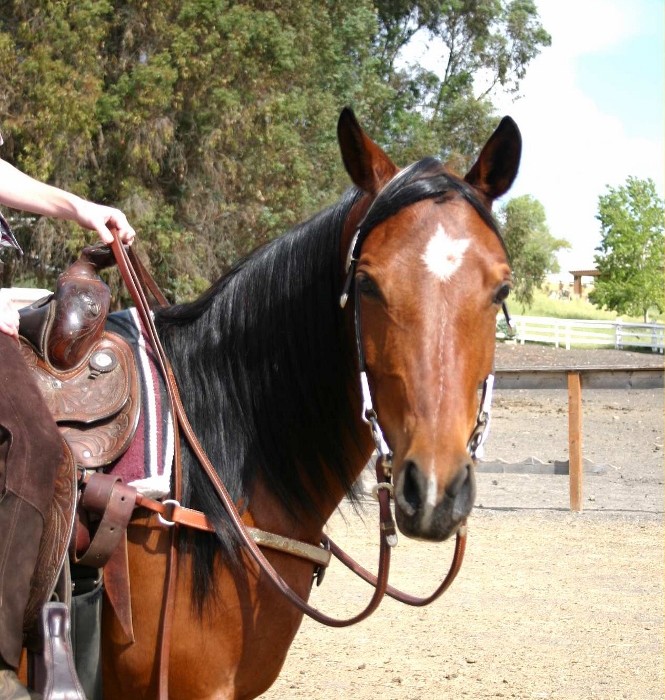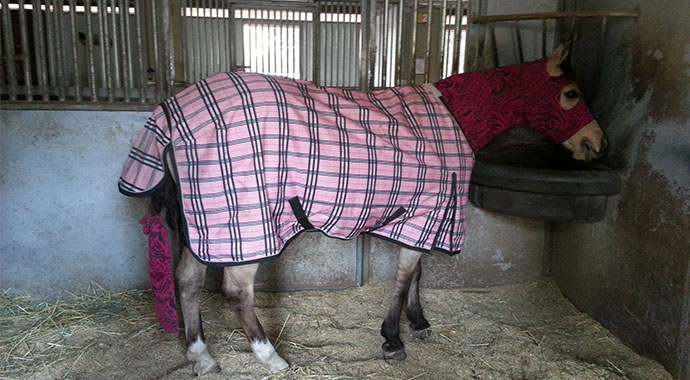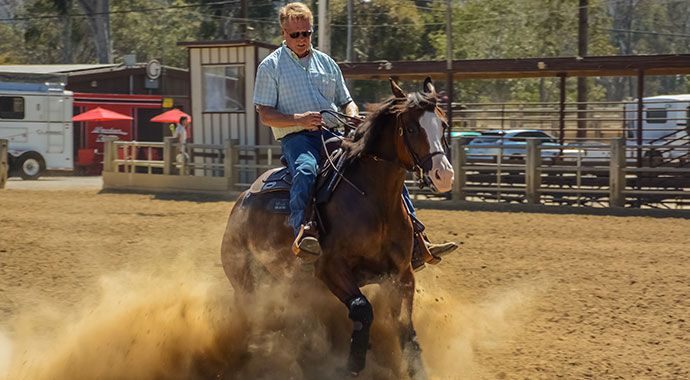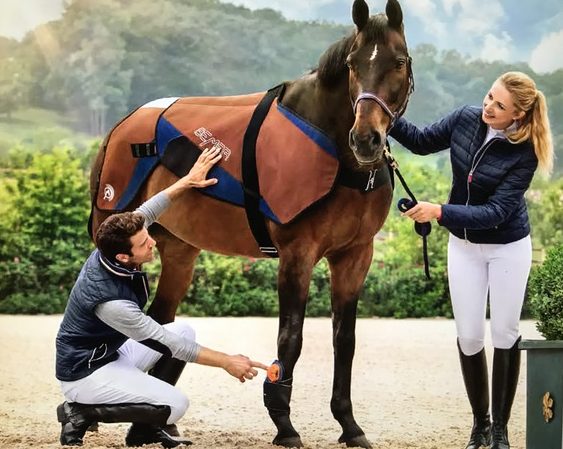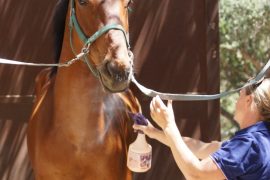Winter has definitely made her way to SLO County, and it looks as though we are in for a wet season. When the rain is falling, the arenas are muddy and the horses are furry, it’s necessary to change your normal workout routine. Most of our horses are used to being ridden every day (or at least a few times a week), and when they are suddenly bundled up in their winter blankets and we are doing everything we can to avoid all of that sloppy ground, the lack of exercise can have a detrimental effect. Think of an athlete who is suddenly stuck on the couch for weeks at a time doing nothing but eating…the body can change and the mind can go a little haywire. So, what can we do during these winter months to ensure that our horses are kept as healthy and fit as possible? Here are a few tips that might help.
Evaluate Your Feeding Routine
During the summer months, show season, the height of trail riding season, etc., we feed our horses based upon their activity level; we want them to have energy and stamina and be supported for vigorous work. When the work suddenly isn’t there, it makes sense to go through and consider what your horse is eating…this can go a long way for simply preventing your horse from packing on those extra winter pounds to actually preventing more serious things like Laminitis, Founder, Insulin Resistance, and other dietary/activity related issues. Have a look at the amount of feed that you are giving, and consider replacing “high sugar” feeds, like forage, with something like orchard grass or timothy grass, which has a lower sugar content. You may also need to cut back on the amount of feed that you are giving. Don’t forget to go through your supplements as well…while you likely want to keep your horse on supplements for joint support, gut support, etc., you may want to cut back on the “grains” or supplements that are extremely high in fat or sugar.
Move, Move, Move
It can be tough when you get to the barn and step out of your car into three inches of mud to actually want to get your horse out of his stall and slog around, but it’s important. Older horses, horses who are used to a high level of activity, etc, really need that movement to keep their bodies in shape, loose and comfortable. So, while you can likely get away with leaving your horse in his stall when the rain is actually falling, if the skies clear, it’s your responsibility to pull on your rubber boots and get him out. Some days, you may only be able to go for a hand walk, other days may afford you the opportunity for a safe hack around the property, and others may allow you to get into the arena and just do a little walking and jogging (or trotting), but whatever you are able to do, try to get that heart rate up and keep it up for at least 20 minutes.
Get Creative
As mentioned above, the weather is going to dictate what you can and can’t do with your horse. The last thing that you want to do is go slipping around in an arena that is too wet to ride in, or slipping down a trail that is too slick to be safe. Still, there are a lot of things that you can do with your horse even when it’s too wet to ride normally. If it’s raining and you have a covered grooming area that is accessible, pull your horse out of his stall and give him a good curry and comb out; this will go a long way toward keeping his mind “in shape”, as it’s natural for a horse to go a little stir crazy if they are used to getting out regularly and suddenly that stops. I’ve also been known to make a few laps up and down the barn aisle when it’s raining – it’s not a lot, and it doesn’t really get the heart rate up, but it does keep my girl a little looser and happier when it’s raining. If there’s a break in the storm and you can get outside, throw some poles on the ground and do a little hand walking over some easy and safe obstacles – this keeps your horse focused and works out his mind as well as stretches those muscles. I also find myself doing more manual bending and stretching with my mare when the weather is bad…I’ll start with the back legs and stretch them back and forward, use a hoof pick to lightly run down her back so that she arches and bends, and then I will do her front legs and her neck in both directions. The idea here is that you don’t want the body to go from full activity to zero activity…do what you can, and get creative with it!
In the end, the important thing here is to remember that your horse is an athlete, and when an athlete takes a break from work, changes in diet need to occur, and activity cannot cease all together. Be extra attentive to your horse’s physical and mental state during these winter months so that when spring arrives it will be easy to get back into the saddle.

